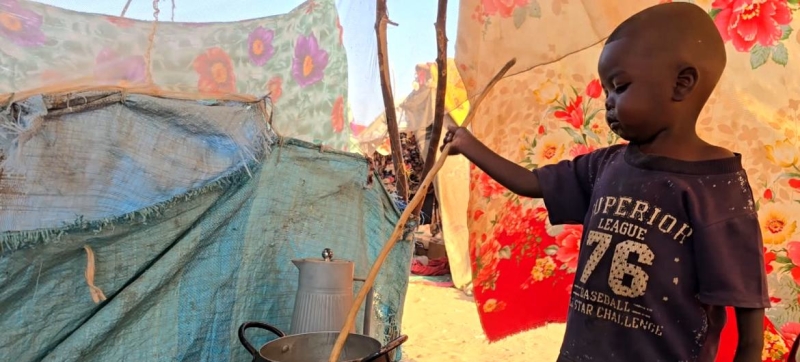
A child in a refugee camp in Tawil, Darfur. Sudan: 45 percent of population on the brink of famine Humanitarian aid
Famine in Sudan is a direct consequence of the war. More than two and a half years of armed conflict have left 21.2 million people – 45 percent of the population – on the brink of famine, with famine officially confirmed in two cities. However, where fighting has eased and humanitarian organizations have been able to reach those in need, rates of malnutrition have begun to decline.
Aid volumes have increased in areas reached by the UN World Food Program (WFP), bringing significant relief to the population. But where clashes continue, populated areas are cut off from humanitarian support, and the situation remains critical.
Two cities in the grip of famine
Two cities, El Fasher and Kadugli, where famine was declared, are largely isolated from aid supplies.
WFP has been warning about the critical situation in El Fasher since April 2024, when the city came under siege.
However, WFP operations in Sudan have already helped turn the tide: if in In December 2024, ten areas were classified as famine-stricken, nine of which were subsequently excluded from this category or transferred to the status of “threatened by famine” – primarily where aid could be delivered regularly.Over the past year, WFP has dramatically increased its support across the country, helping to stop the spread of hunger in several regions. With safe humanitarian corridors, unrestricted access and sufficient resources, the trend can be sustained.
WFP now assists more than four million people each month with food and cash. This is double last year’s monthly total.
Since the start of 2025, the number of people receiving assistance in areas where famine has been confirmed and in areas on the brink of famine has tripled. Over the past six months, approximately 1.8 million people in these zones received monthly WFP assistance—85 percent of all those in need of support in these regions.
Restoring Humanitarian Access
The past year has also brought progress in restoring humanitarian access to areas that were virtually non-existent in 2024. unreachable: Khartoum, Al-Jazeera, several areas of North Darfur, the Nuba Mountains and Kadugli.
When fighting died down in Khartoum in March-April 2025, WFP quickly delivered aid there. Over the following months (April-June 2025), more than a million people in all seven districts of Khartoum received assistance.
At the end of October 2025, a UN humanitarian convoy reached the besieged Kadugli – this is the first large-scale delivery of aid since the beginning of the conflict, paving the way for the establishment of a regular humanitarian corridor.
Agriculture support is the path to reducing hunger
WFP has also played an important role in increasing wheat and sorghum production in eastern Sudan through projects supported by the African Development Bank and the World Bank. bank.
Increasing crop yields have contributed to the decline in malnutrition rates.
Increased funding needed
WFP’s continued relief operations will require $662 million over the next six months. And with additional resources, WFP will be able to expand its activities and provide support to 8 million people per month.
Financing of both emergency assistance and long-term projects aimed at increasing agricultural production, restoring destroyed housing and infrastructure, and improving living conditions is needed.
WFP calls on the international community to quickly increase funding for projects in Sudan.
